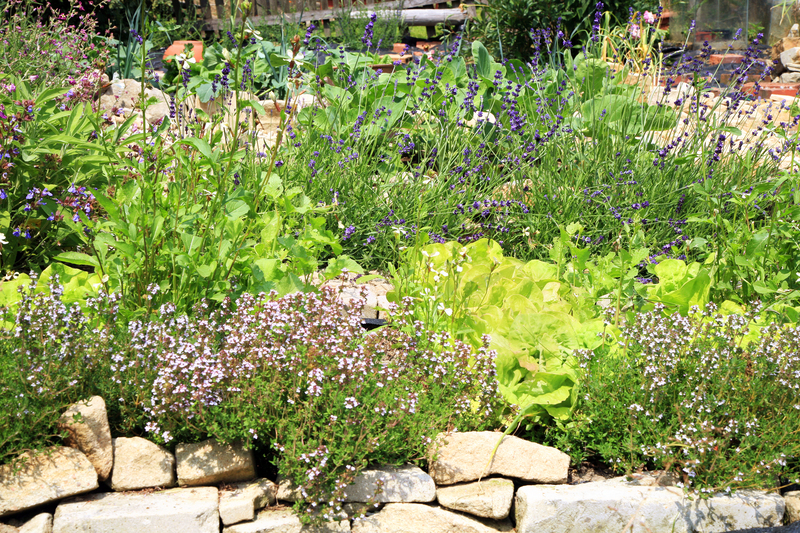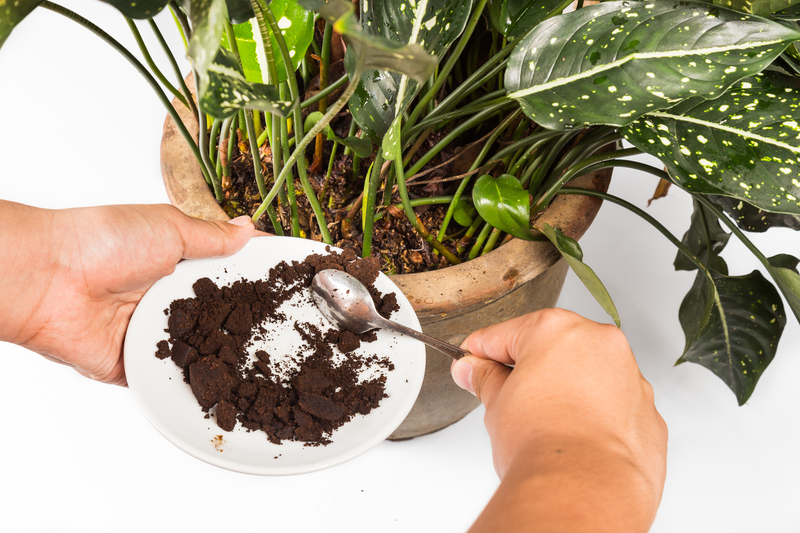Top Tall-Potted Plant Ideas for Building a Natural Outdoor Screen
Are you searching for a beautiful way to achieve privacy in your yard or patio while basking in nature? Consider using tall-potted plants to create a natural outdoor screen! Planting in containers offers flexibility, versatility, and a lush aesthetic. Whether you want to define boundaries, block unwanted views, or create a serene retreat, potted plant screens can do it all. In this comprehensive guide, you'll discover a variety of creative, low-maintenance, and impactful ways to use tall potted plants for outdoor screening. Learn which tall planters work best, which species to choose, and how to care for your living wall.
Why Choose Tall Potted Plants for Outdoor Screening?
Outdoor spaces crave privacy yet should never feel boxed in. Tall potted plants bridge the gap between function and beauty, offering:
- Visual privacy: Dense foliage and vertical growth provide natural barriers from passersby and neighbors.
- Mobility: Move planters as your needs or light conditions change.
- Flexibility: Choose combinations of species, colors, and textures to suit any style.
- Easy maintenance: Potted screens are simple to water, prune, and refresh.
- Space-saving: Ideal for patios, decks, balconies, and small courtyards where ground planting may not be possible.
Tall potted plant screens represent a sustainable and visually appealing alternative to fences and artificial walls. Let's explore the top options for your green privacy solution!

Best Tall-Potted Plant Species for Natural Outdoor Screens
1. Bamboo (Bambusa spp.)
Bamboo is a classic choice for anyone seeking quick, dense privacy in pots. Varieties such as Golden Bamboo and Fargesia are well-suited to containers and deliver a tropical vibe. Their upright canes and bushy foliage make them ideal living screens.
- Height: 8-20 ft (depends on variety and pot size)
- Light: Full sun to partial shade
- Maintenance Tips: Use large, heavy pots to prevent tipping. Water regularly and feed with balanced fertilizer.
2. Italian Cypress (Cupressus sempervirens)
If you desire a tall, slim screen with a Mediterranean flair, Italian cypress is unbeatable. These evergreens grow upright in containers, providing a vertical accent perfect for creating a formal or minimalist outdoor screen.
- Height: Up to 10-15 ft in pots
- Light: Full sun
- Maintenance Tips: Use well-draining soil and do not overwater. Prune for shape as needed.
3. Privet (Ligustrum spp.)
Privet is an extremely popular hedge plant for outdoor potted privacy screens. Fast-growing, with lush foliage, privet can be topiarized or allowed to grow free-form in tall planters, offering excellent height.
- Height: 6-12 ft (in pots)
- Light: Full sun to part shade
- Maintenance Tips: Shear regularly for neatness; water consistently.
4. False Laurel (Viburnum odoratissimum)
For a broad-leaved alternative that is both dense and attractive, Viburnum is a wonderful candidate for a tall container screen. Wax-green leaves and white spring blooms provide year-round interest.
- Height: 6-10 ft in large pots
- Light: Full sun to part shade
- Maintenance Tips: Feed in spring, prune after flowering. Uses large containers for stability and root development.
5. Japanese Maple (Acer palmatum)
While not evergreen, the Japanese Maple brings stunning color and elegance to privacy screens, especially in autumn. Choose upright varieties (`Bloodgood`, `Emperor`) for best results in containers.
- Height: 6-12 ft in containers
- Light: Dappled sun to light shade
- Maintenance Tips: Use moisture-retentive potting mix; avoid harsh wind; prune gently for size control.
6. Arborvitae (Thuja occidentalis)
Arborvitae is an evergreen favorite for privacy screens and adapts surprisingly well to pots. Their conical form creates a natural green wall--great for year-round outdoor screens.
- Height: Up to 8-12 ft in pots
- Light: Full sun
- Maintenance Tips: Plant in large containers and never let soil dry out completely. Watch for root-bound plants and re-pot as needed.
7. Ficus (Ficus benjamina, Ficus microcarpa)
These lush, leafy trees thrive in warm climates and make impressive statement screens when grown in pots. Regularly trimmed, ficus can be kept in desired shapes and heights.
- Height: 8-15 ft in large pots
- Light: Bright, filtered sun
- Maintenance Tips: Keep soil evenly moist; protect from frost.
8. Olive Tree (Olea europaea)
Bring a Mediterranean charm with olive trees in tall pots. Their slender leaves, gray bark, and slow growth make them both low-maintenance and stylish for privacy screening.
- Height: 6-10 ft in pots
- Light: Full sun
- Maintenance Tips: Needs good drainage; drought-tolerant when established.
9. Clumping Grass (Miscanthus, Pennisetum, Cortaderia)
Large ornamental grasses create movement and privacy in a lightweight package. Maiden grass, fountain grass, and pampas grass all perform remarkably in oversized containers.
- Height: 5-10 ft in tall pots
- Light: Full sun
- Maintenance Tips: Cut back in late winter; divide clumps every few years.
10. Sacred Bamboo (Nandina domestica)
Actually not a bamboo, nandina adds delicate, airy foliage and vibrant seasonal berries. Its upright, multi-stem form is perfect for contemporary outdoor spaces.
- Height: 5-8 ft in containers
- Light: Sun or light shade
- Maintenance Tips: Avoid soggy soil; prune canes occasionally for fullness.
Strategically Arranging Tall Potted Plants for Effective Outdoor Screening
Placement is as crucial as plant selection. Use the following tips for maximum effectiveness:
- Layer different heights: Combine Roman cypresses at the back, with midsize shrubs and grasses in front for depth and staggered coverage.
- Overlap foliage: Position pots so plant leaves intermingle, leaving no gaps.
- Angles matter: Place tall planters diagonally across patios or beside seating areas for best visual shielding.
- Create a zig-zag: Instead of a straight line, a zig-zag or staggered arrangement breaks up monotony and improves privacy.
Remember, natural outdoor screens are not limited to boundaries! Partitioning dining areas, sun loungers, or spa zones--tall-potted plants instantly set the atmosphere and mood.
Choosing the Best Planters for Tall Plant Privacy Screens
Selecting appropriate planters is vital. Ensure your pots are:
- Large enough for ample root space and stability (at least 18-24 inches deep and wide for large species).
- Sturdy and frost-proof in climates prone to freezing.
- Featured with drainage holes to prevent root rot.
- Available in styles and materials (ceramic, resin, wood, concrete) that match your landscape.
*Pro tip:* For mobility, use containers with wheels or place pots on rolling platforms. This allows you to easily reconfigure your tall outdoor screens as seasons and needs change.
Design Ideas and Configuration Inspiration
Linear Screens for Outdoor Privacy
The most common way to use tall-potted plants for outdoor screening is in a linear row along a fence, patio edge, or balcony rail. Try these combos:
- Evergreen-only line: Italian cypress, arborvitae, or privet pots.
- Mixed textures: Arborvitae intermixed with large grasses or flowering viburnums for year-round interest.
- Colorful accents: Japanese maples layered behind green screens for dramatic fall contrast.
Living Walls and Vertical Garden Screens
Stack modular planter units or use tall trellises in containers to encourage climbing vines like star jasmine, clematis, or wisteria for an evergreen or seasonal blooming outdoor curtain. Add trailing plants at the base for extra volume.
Cluster Arrangements and Corner Screens
Group pots of varying heights in clusters to screen off spa tubs, sitting corners, or unsightly utilities. A mix of upright evergreens with bushy grasses and colorful annuals provides a layered effect that improves privacy and aesthetics.
Care and Maintenance for Tall Potted Plant Screens
Watering and Feeding
- Water thoroughly but allow surface soil to dry between watering, except for thirsty species (e.g., bamboo, arborvitae).
- Apply slow-release, all-purpose plant food in spring and mid-summer.
Pruning and Shaping
- Regularly prune for height, density, and shape to avoid legginess and maintain a screen effect.
- Remove any dead or yellowing leaves promptly to keep the screen lush and healthy.
Repotting and Soil Maintenance
- Repot every 2-3 years or if roots circle the pot or growth slows.
- Refresh the top few inches of potting mix each season with compost or fresh soil.
Sustainable and Stylish: Benefits of Tall-Potted Plant Outdoor Screens
- Eco-friendly: Plants absorb CO2, filter dust, and increase oxygen around your home.
- Wildlife-friendly: Flowering and fruiting species attract birds, butterflies, and bees.
- Noise reduction: Dense evergreen foliage can even reduce sounds from traffic or neighbors.
- Customizable: Change the display with the seasons or with your personal taste--pots make it so easy!
Additional Tips for a Stunning Natural Outdoor Screen
- Consider fragrance: Add pots of lavender, star jasmine, or gardenia to scent the air and delight your senses.
- Think about light: Use light-colored planters to reflect heat on sunny patios or darker pots for a striking contrast.
- Add vertical support: For fast-growing vines, insert trellises or obelisks into the pots to direct growth upwards.
- Choose pots that complement your architectural style--sleek concrete for modern homes, terracotta for rustic charm, or bright ceramic for a Mediterranean touch.

Frequently Asked Questions (FAQ) About Tall-Potted Plants for Outdoor Screening
Can tall-potted plants survive year-round outdoors?
Many species are hardy enough for all-season outdoor growth, especially evergreens and trees rated for your USDA hardiness zone. Always use frost-proof pots and protect tender varieties during winter with mulch or by moving them to a sheltered area.
How far apart should I space my screen planters?
Pots should be placed close enough for mature foliage to overlap slightly--generally 2-3 feet apart for dense-screening species like bamboo, privet, or arborvitae.
What's the best soil for tall-potted outdoor screens?
A high-quality, lightweight potting mix with excellent drainage is ideal. Mix in slow-release fertilizer and organic matter for extra vitality.
Do tall-potted plants need special care on balconies or rooftops?
Yes! Secure pots against wind, ensure adequate drainage, and check for weight restrictions if used on raised surfaces. Monitor watering needs more closely due to faster drying in exposed spots.
Conclusion: Transform Your Outdoor Space with a Natural Screen of Tall-Potted Plants
A natural outdoor screen with tall-potted plants provides unmatched privacy, greenery, and design customization, all while supporting local ecosystems. Whether you crave evergreen elegance, vivid seasonal colors, or a lush layered look, there's a tall-potted plant arrangement to suit every style and space. With the creative ideas and practical tips above, you'll be ready to build a stunning, living outdoor screen that enhances your home for years to come!
Ready to create your own natural privacy oasis? Explore your favorite species, gather some stylish planters, and let nature work its magic for the ultimate outdoor escape!